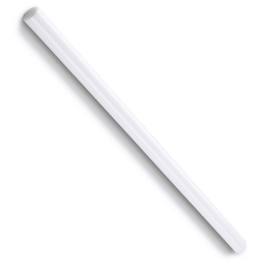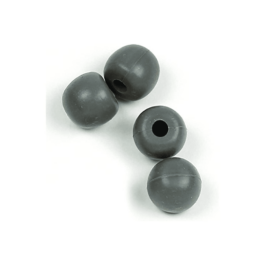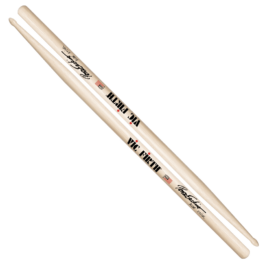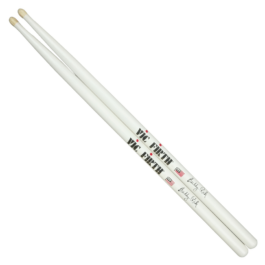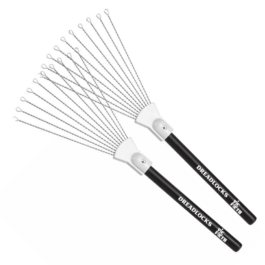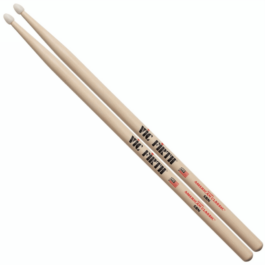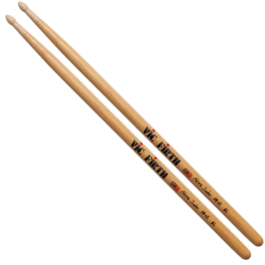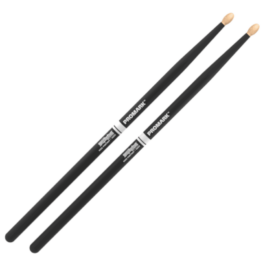
-
- Drums & Percussion, Sticks & Mallets
LP Super Guiro Plastic Scraper
- R80
- Latin Percussion LP243B Super Guiro Scraper - Plastic
- Select options
-
- Drums & Percussion, Sticks & Mallets
Vater Goodwood Nylon Tip Drum Sticks – 5B
- R140
- The VH5BN sticks are 5Bs, well-balanced, comfortable, responsive, and above all, versatile.
- Select options
-
- Drums & Percussion, Drum Accessories, Sticks & Mallets
Vic Firth Universal Drumstick Practice Tips – 2 Pairs
- R140
- These rubber tips fit over virtually all drumsticks, and come in 2 pairs.
- Select options
-
- Drums & Percussion, Sticks & Mallets
Vic Firth Signature Series Peter Erskine “Ride Stick” Drumsticks
- R415
- Extra long taper and tear drop tip for enhanced cymbal response. Beefed up shaft for extra power.
- Select options
-
- Drums & Percussion, Sticks & Mallets
Vic Firth Signature Series Jojo Mayer Drumsticks
- R385
- Designed to offer a big sound and feel without a lot of weight.
- Select options
-
- Drums & Percussion, Sticks & Mallets
Vic Firth Signature Series Buddy Rich Drumsticks
- R415
- A modified 5A with a larger tip, neck and shoulder.
- Select options
-
- Drums & Percussion, Sticks & Mallets
Vic Firth American Classic® Kidsticks Drumsticks – Pink
- R220
- Engineered to make playing easy for the very young drum set player—ages 3 to 8. Produces a quality sound.
- Select options
-
- Drums & Percussion, Sticks & Mallets
Vic Firth American Classic® Hickory Drumsticks – F1
- R375
- Medium round tip with a short tapered neck. Great for fusion or electric jazz.
- Select options
-
- Drums & Percussion, Sticks & Mallets
Vic Firth “Dreadlocks” Braided Stainless Steel Brushes
- R875FREE DELIVERY
- Braided heavy gauge stainless-steel wires produce bold percussive sounds. Strike, scrape or let your imagination create a variety of effects. With hickory handles.
- Select options
-
- Drums & Percussion, Sticks & Mallets
Vic Firth American Classic® Nylon Tip Drumsticks – 5B
- R400
- Tear drop tip. Ideal for rock, band and practice.
- Select options
-
- Drums & Percussion, Sticks & Mallets
Vic Firth Signature Series Akira Jimbo Tear Drop Drumsticks
- R405
- Tear drop tip for cymbal definition and tapered butt for unique balance.
- Select options
-
- Drums & Percussion, Sticks & Mallets
ProMark Mike Portnoy 420x Active Grip Drumstick
- R220
- The ProMark Mike Portnoy 420x drumstick offers more power and projection than Mike's original 420 model.
- Select options
Drumsticks are yet another crucial piece of gear that will ultimately affect the sound feel and overall playing experience of the drums depending on what type of sticks you buy.
They are manufactured to a wide variety of specifications to achieve different tones as well as a different feel when striking the drums. for example some drumsticks have a longer shaft whereas others will have a shorter shaft. Also, the size will once again affect the way the drumstick sounds and the way it feels.
Below are some more considerations a drummer could take before purchasing a pair of drumsticks:
1) The Material of the Drumstick: The most common material for drumsticks is wood. However, many beginner drummers aren’t aware that the specific type of wood for a drumstick will end up affecting the sound and response of the stick itself. For example, an Oak wood drumstick is heavier as it is a denser wood. Whereas Maple wood sticks will result in a softer experience. Some of the most common drumstick materials include maple, hickory, oak wood and even graphite.
2) The shape and material of the tip: A very commonly overlooked aspect of the drumstick is the shape of the tip. You can buy different drumsticks with different shaped tips which include barrel tips, teardrop tips and oval tip, just to name a few. The tip size will most definitely affect the overall tone of your drums. For example, a Jazz drummer would generally opt for a tear drop tip because of the warmer tone it produces. Whereas a metal drummer would perhaps tend towards an oval tip due to its larger surface area.
It is also important to remember that drumstick tips are offered in a choice between either wooden tips or nylon tips. Wooden tips are softer sounding and feeling as well as providing you with more dynamic control. whilst nylon tips are much brighter and give a more consistent sound especially on the cymbals.
3) Size of the Drumstick: Drumsticks are categorized worldwide by an alpha numeric system to represent a different size. As we’ve mentioned already, the size of the drumstick will no doubt affect the way the drums feel and sound. Examples of these sizes include 7A, 5A, 5B etc. You will notice that each size is often used to achieve something different.


